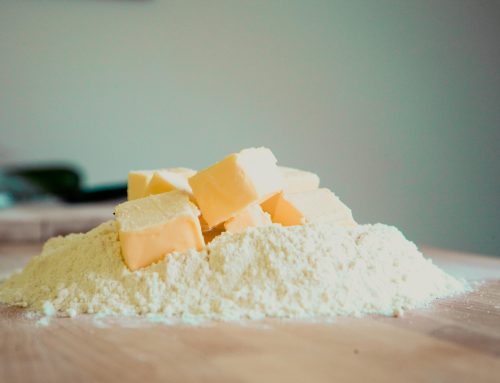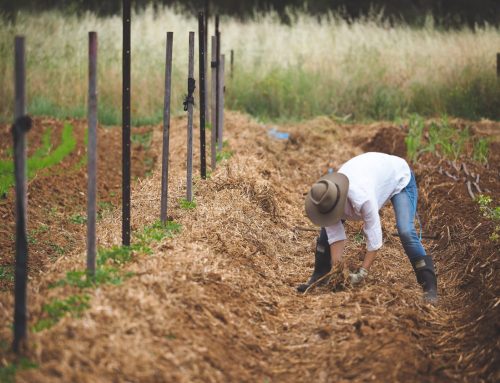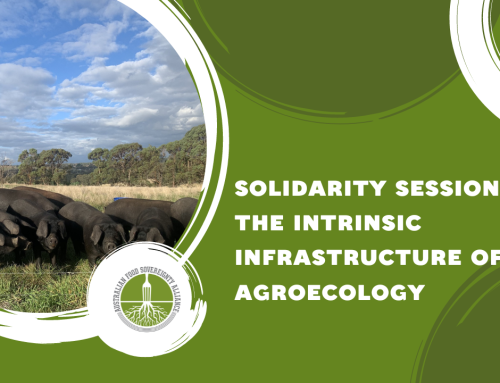By Merran Laver. First published on www.southernharvest.net.au
Diversity in food production and supply is important in creating a resilient local food system.
There are many reasons to increase diversity in our food supply at a local level. One is to promote access to fresh, seasonal foods that consumers will choose to eat. Foods available locally have a reduced ecological footprint compared with those from the large-scale, conventional system upon which we’re all at least partly dependent. Another is our vulnerability due to reliance upon only a few crops.
This is a local as well as a global issue.
Simran Sethi, an environmental journalist from the US, discussed the recent global decrease in food diversity in an ABC Lateline interview. She talked about the vulnerability we’ve placed ourselves in by relying on a reduced number of crops: 75% of the world’s food is generated from only 12 plants. This, Sethi believes, fits in with dominating agricultural enterprises that are based on crop monocultures. She stated that we need to increase diversity in our farming and that consumers also have a critical role by choosing to diversify their diets.
“Eating locally is a revolutionary act and I really don’t want to sound trite about that but you know, this globalisation has happened in our lifetime. In 20 years we’ve seen the entire food system kind of upended and I think really the solution to this challenge is to start to think differently about how we grow food and how we consume and purchase food.”
“It makes very little sense in some instances to procure food from faraway places. It increases the ecological footprint of that food, it increases greenhouse gas emissions of that particular food.”
Many regions throughout Australia are undergoing fundamental shifts in diversifying their food supply and promoting local production to consumers. This is happening both in cities and in rural areas, and where these overlap, such as in the Southern Harvest Region, which incorporates the growing city of Canberra as well as smaller towns and communities surrounding the ACT.
Examples of how diversity in local food supply systems is increasing include: the growth of farmers markets and community gardens; promotion of encouraging people to grow their own produce; value-adding enterprises (eg small businesses, such as baked goods, juices, smoked meats/fish); farmers trying out new products for sale (cheeses/milk, different varieties of apple/pork/etc.).
These examples involve those who currently work to supply food to the population as well as the consumers who ultimately determine demand. As Sethi says,we need to “recultivate our relationships with local farmers and ensure that those relationships are strong and supported and in place, and the only way to do that is through consumer support”.
Our diverse seasonal produce is sometimes showcased at local annual food festivals that are mushrooming all over the country; including the pumpkin festival at Collector, chestnut festival at Hoskinstown and cherry festival at Young, to name a few. These highlight and celebrate the production of particular foods during their harvest season, while bringing communities of producers and consumers together for a day each year. A quick scan of food annual festivals everywhere shows that diversity is one aspect that is also celebrated – both cultural and in relation to the produce.
Sustainable food initiatives that encompass this diversity are increasingly of interest to people who care about how and where their food is produced, and the increased security or resilience of their food supply. It is also of great interest to the producers of our food, some of whom are successfully venturing into products not traditionally grown in the region but suited to the climate – such as nuts, olives, herbs, truffles, saffron etc.
A current food production strategy for urban Victoria outlines how “Council and the community will work together on local food initiatives which enhance health, wellbeing and community connectedness, improve the environment and regenerate natural resources”.
“An integrated response is called for to deliver better and more resilient food production models. This requires Council to form innovative partnerships with the community, local business, professional stakeholders and all levels of government.”
The strategy also points to its community’s ‘rich diversity of food cultures’ and the increased biodiversity that can come from promoting local food growing.




